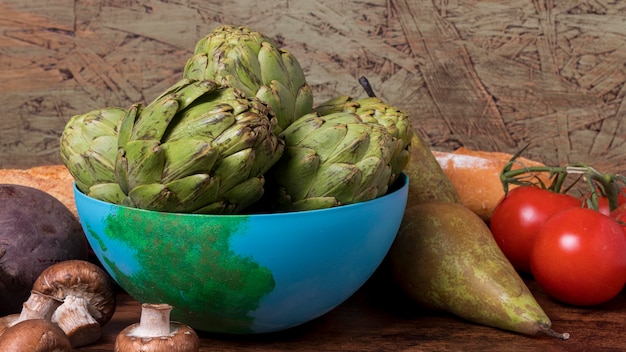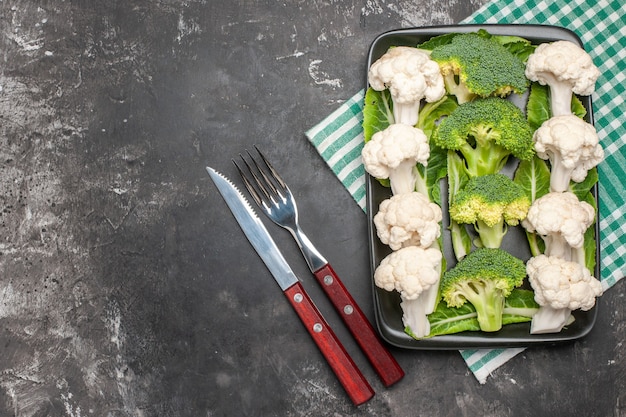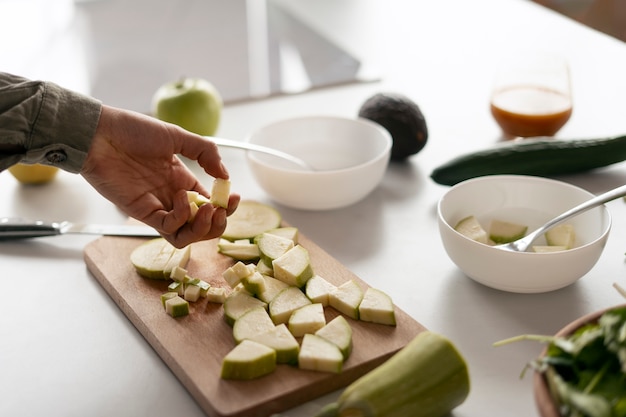Part 1: The Basics of Cooking Artichokes

Before we dive into the specifics, let's talk about the different ways you can cook an artichoke. There's steaming, boiling, roasting, grilling, and even frying! Each method brings its own unique flavor profile and texture to the table, so it really comes down to personal preference and what you're aiming for in your final dish.
1.1 Steaming Artichokes: The Gentle Approach
Steaming is my personal favorite method for cooking artichokes. It's gentle, allowing the artichoke's natural flavors to shine through while retaining its tender texture. Plus, it's incredibly easy! You just need a steamer basket and a pot of boiling water.
Here's the simple breakdown:
- Prep Time: First, we need to prepare the artichokes. Grab a sharp knife and trim the tough outer leaves, ensuring they are nice and neat. Cut off the pointy tips, making sure you get rid of any sharp edges. Now, let's tackle the fuzzy choke (that pesky, hairy part in the center). Carefully scoop it out using a spoon or cut it out with a sharp knife.
- Steam Time: Now, the fun begins! Place your prepped artichokes in the steamer basket, set it over a pot of boiling water, cover the pot, and let the magic happen! Steam them for approximately 30-40 minutes. How do you know they're ready? Simply pierce the base of the artichoke with a fork. If it glides in smoothly, you're good to go!
For an added flavor boost, you can add a touch of lemon juice or wine to the boiling water. This helps to brighten up the natural flavors of the artichoke and prevents it from browning.
1.2 Boiling Artichokes: A Quick and Easy Option
Boiling is another quick and easy method for cooking artichokes. It's similar to steaming, but instead of a steamer basket, you'll immerse the artichokes directly in the boiling water.
Here's how I do it:
- Prep Time: Start by prepping your artichokes just like you would for steaming - trimming, removing the pointy tips, and taking care of the fuzzy choke.
- Boil Time: Fill a large pot with salted water and bring it to a rolling boil. Gently add the prepped artichokes and reduce the heat to a simmer. Let them cook for 20-30 minutes. As with steaming, you can check for tenderness by piercing the base with a fork.
Boiling can sometimes result in slightly less appealing aesthetics, as the leaves may become a bit limp. But, it's a great option if you don't have a steamer or are short on time.
1.3 Roasting Artichokes: A Deliciously Aromatic Method
Roasting is my go-to method when I want to bring out the full, rich flavor of artichokes. It creates a beautifully roasted aroma and adds a touch of crispiness to the leaves. It's also a fantastic way to cook them alongside other vegetables for a hearty and satisfying meal.
Here's how I roast them to perfection:
- Prep Time: Prepare the artichokes by trimming the tough outer leaves, cutting off the pointy tips, and removing the fuzzy choke. Next, cut the artichoke in half lengthwise.
- Roast Time: Drizzle the artichoke halves with olive oil, then generously season them with salt, pepper, and any other herbs or spices that tickle your fancy. Place the halves cut-side down on a baking sheet lined with parchment paper. Now, slide them into a preheated oven at 400°F (200°C). Roast them for about 30-40 minutes, until the leaves are tender and slightly browned.
For an extra layer of flavor, you can brush the artichokes with a mixture of butter and lemon juice before roasting. Just be mindful to keep a watchful eye on them, as they can burn easily.
1.4 Grilling Artichokes: For a Smoky Flavor
If you're looking to add a smoky twist to your artichoke experience, grilling is the way to go. It brings out a delicious smoky flavor and gives them a beautiful char-grilled appeal.
Here's how I grill artichokes like a pro:
- Prep Time: Prepare the artichokes by trimming the tough outer leaves, cutting off the pointy tips, and removing the fuzzy choke. Cut the artichoke in half lengthwise.
- Grill Time: Drizzle the artichoke halves with olive oil and season them with salt, pepper, and your favorite herbs and spices. Place the halves cut-side down on a hot grill. Grill for about 15-20 minutes, turning them halfway through to ensure they cook evenly. You'll know they're ready when the leaves are tender and slightly charred.
Remember, always clean your grill before cooking to prevent sticking. A grill brush is a must-have tool for any grilling enthusiast!
1.5 Frying Artichokes: A Crispy Delight
Frying artichokes is a quick and easy method, particularly if you're after a crispy appetizer. It's a decadent treat and a fantastic way to add a touch of sophistication to any meal.
Here's how I fry them to golden perfection:
- Prep Time: Prepare the artichokes by trimming the tough outer leaves, cutting off the pointy tips, and removing the fuzzy choke. Slice the artichoke into thin rounds or wedges.
- Fry Time: Dip the artichoke slices in a batter made with flour, eggs, and breadcrumbs. Heat a generous amount of oil in a large skillet over medium heat. Fry the artichoke slices for about 2-3 minutes per side, or until they are golden brown and crispy.
Serve these fried beauties immediately with a dipping sauce of your choice. I highly recommend aioli or lemon-garlic sauce - they pair perfectly with the crispy artichoke texture.
Part 2: cooking times for Artichokes

Now, let's address the elephant in the room: cooking times. This is where things can get a bit tricky, as cooking times vary depending on the size, age, and method of cooking. But don't worry, I've got you covered!
Here's a general guideline to get you started:
2.1 Steaming Artichokes
Steaming artichokes typically takes around 30-40 minutes. However, it's always best to check for tenderness using a fork. If the leaves are tender and the fork slides in easily, they're ready to enjoy!
2.2 Boiling Artichokes
Boiling artichokes takes about 20-30 minutes. Just like with steaming, use the fork test to check for tenderness. You'll know they're done when the fork glides through the base easily.
2.3 Roasting Artichokes
Roasting artichokes takes about 30-40 minutes. You'll know they're ready when the leaves are tender and slightly browned. The aroma of roasted artichokes is intoxicating, so you'll know when they're nearing completion.
2.4 Grilling Artichokes
Grilling artichokes takes about 15-20 minutes. You'll know they're done when the leaves are tender and have a slightly charred appearance. The char adds a smoky flavor that's simply irresistible.
2.5 Frying Artichokes
Frying artichokes takes about 2-3 minutes per side. You'll know they're ready when they are golden brown and crispy. Be careful not to overcook them, as they can easily become dry and tough if fried for too long.
Remember, these are just general guidelines. If you're unsure, it's always best to check the artichoke for tenderness using a fork.
Part 3: Choosing the Perfect Artichokes

Now that you know how long to cook them, let's talk about how to choose the best artichokes for your culinary adventures.
3.1 Selecting fresh artichokes: The Signs of Quality
When choosing artichokes, look for ones that are firm and tightly closed. The leaves should be a vibrant green colour, indicating freshness. Avoid artichokes that have brown, wilted, or slimy leaves, as these are signs of spoilage.
Also, be sure to check for any signs of damage, such as cuts, bruises, or holes. These could indicate that the artichoke has been mishandled and may not be as fresh.
3.2 Avoiding Overripe Artichokes: Recognizing Signs of Overmaturity
Overripe artichokes can have a bitter flavor and aren't as pleasant to eat. You can tell if an artichoke is overripe if the leaves are open and the base feels soft. It's best to steer clear of those!
3.3 Choosing the Right Size: Tailoring Your Choice
The size of the artichoke will affect its cooking time. Smaller artichokes will cook more quickly than larger ones. So, if you're short on time, choose smaller artichokes. For a grand feast with larger artichokes, plan for a bit more cooking time.
3.4 Storage Tips: Preserving Freshness
Once you've chosen your perfect artichokes, it's important to store them properly to keep them fresh. Artichokes should be stored in the refrigerator, but not for too long. The ideal storage time is no longer than a week.
If you need to store artichokes for longer, you can blanch them and freeze them. Just make sure to remove them from the freezer a few hours before cooking to allow them to thaw properly.
Part 4: Preparing Artichokes for Cooking
Now, let's get into the nitty-gritty of preparing artichokes for cooking. It's a bit of a process, but it's not as daunting as it may seem. With a little patience and guidance, you'll be a pro in no time!
4.1 Trimming the Artichoke: A Clean and Neat Approach
The first step is to trim the tough outer leaves. Start by cutting off the top inch or so of the artichoke, along with any pointy tips. You can also remove any leaves that are damaged or discolored. You want your artichoke to look nice and neat, like a well-dressed guest at a dinner party!
4.2 Removing the Choke: Conquering the Fuzzy Center
Next, we tackle the fuzzy choke. There are two main methods to remove this pesky part:
- Scooping: Carefully scoop out the fuzzy choke with a spoon. This method is perfect for those who want to avoid using a knife.
- Cutting: Use a sharp knife to cut a circle around the base of the choke. Then, carefully remove it. Be extra cautious not to cut yourself!
4.3 Adding Lemon Juice: Preventing Browning
Once you've prepared your artichokes, it's a good idea to dip them in a bowl of water with lemon juice. This helps prevent browning, keeping their vibrant green color.
Some people also prefer to add a splash of lemon juice to the cooking water. This helps to brighten the artichoke's flavor and retain its color.
Part 5: Serving and Enjoying Artichokes
Now, let's talk about serving and enjoying your delicious, cooked artichokes. This is the part we've all been waiting for!
5.1 Serving Options: Endless Possibilities
Artichokes can be served in a variety of ways. They can be eaten hot or cold, as a side dish or as a main course. They can also be used in salads, dips, and other dishes. Here are some of my favorite serving options:
- Classic Steamed or Boiled: Serve steamed or boiled artichokes with a simple dip of olive oil, lemon juice, and garlic. This is a classic and always delicious combination.
- Roasted with a Touch of Parmesan: Serve roasted artichokes with a dollop of butter and a sprinkle of Parmesan cheese. The melted cheese adds a rich and savory touch.
- Grilled with Aioli or Chimichurri: Serve grilled artichokes with aioli or chimichurri sauce. The smoky flavor of the grilled artichoke pairs beautifully with the tangy and herbaceous sauces.
- Crunchy Topping: Add fried artichokes to salads, sandwiches, or pizzas for a crunchy and flavorful topping.
5.2 Eating Artichokes: A Delightful Culinary Experience
To eat an artichoke, simply pull off the leaves one by one. Dip the base of the leaf in your chosen sauce or dip, then scrape the soft flesh from the leaf with your teeth. Don't eat the tough, fibrous part of the leaf.
Once you've reached the heart of the artichoke, you can eat it with a fork or spoon. The heart is tender and delicious, and it's often considered the best part of the artichoke.
Part 6: artichoke recipes
Ready to put your new artichoke knowledge to the test? Here are a couple of my favorite artichoke recipes to get you started.
6.1 Roasted Artichokes with Garlic and Herbs: A Simple and Flavorful Delight
This recipe is simple yet flavorful, and perfect for a weeknight dinner.
- Ingredients:
- 2 large artichokes
- 1/4 cup olive oil
- 2 cloves garlic, minced
- 1 tablespoon chopped fresh parsley
- 1 teaspoon dried oregano
- Salt and pepper to taste
- Instructions:
- Prepare the artichokes by trimming the tough outer leaves, cutting off the pointy tips, and removing the fuzzy choke.
- Slice the artichoke in half lengthwise.
- In a small bowl, whisk together the olive oil, garlic, parsley, oregano, salt, and pepper.
- Brush the artichoke halves with the garlic-herb mixture.
- Place the artichoke halves cut side down on a baking sheet lined with parchment paper.
- Roast in a preheated oven at 400°F (200°C) for about 30-40 minutes, or until the leaves are tender.
- Serve hot with a drizzle of olive oil and lemon juice.
6.2 Fried Artichokes with Lemon Aioli: A Crispy and Tangy Treat
This recipe is a bit more involved, but it's worth the effort! The artichokes are crispy and delicious, and the lemon aioli adds a bright and tangy flavor.
- Ingredients:
- 2 large artichokes
- 1 cup all-purpose flour
- 2 eggs, beaten
- 1 cup breadcrumbs
- 1/2 cup vegetable oil
- For the lemon aioli:
- 1/2 cup mayonnaise
- 1 tablespoon lemon juice
- 1 clove garlic, minced
- Salt and pepper to taste
- Instructions:
- Prepare the artichokes by trimming the tough outer leaves, cutting off the pointy tips, and removing the fuzzy choke.
- Slice the artichoke into thin rounds or wedges.
- In three separate bowls, place the flour, beaten eggs, and breadcrumbs.
- Dip each artichoke slice in the flour, then the egg, and finally the breadcrumbs, making sure to coat them completely.
- Heat the vegetable oil in a large skillet over medium heat.
- Fry the artichoke slices in the hot oil for about 2-3 minutes per side, or until golden brown and crispy.
- Remove the fried artichokes from the skillet and drain on paper towels.
- To make the lemon aioli, combine all ingredients in a bowl and whisk until smooth.
- Serve the fried artichokes immediately with the lemon aioli.
Part 7: Artichoke Trivia and Fun Facts
Did you know...?
- A Thistle in Disguise: Artichokes are actually the flower buds of a thistle plant!
- A Nutritious Treat: They are a good source of fiber, vitamins, and minerals, including vitamin C, folate, and potassium.
- From Arabic Roots: The name "artichoke" comes from the Arabic word "al-kharshuf", which means "thistle".
- Mediterranean Origin: Artichokes are native to the Mediterranean region.
- Roman Aphrodisiac: The Romans believed artichokes had aphrodisiac properties.
- Giant Artichoke: The largest artichoke ever grown weighed over 10 pounds!
Artichokes are a versatile and delicious ingredient that can be enjoyed in a variety of ways. So, why not give them a try? You might be surprised at how much you enjoy them!
Part 8: FAQs
You've probably got a few questions about cooking artichokes, and I'm here to answer them. Let's delve into some of the most common ones.
8.1 What happens if I cook an artichoke for too long?
If you cook an artichoke for too long, it will become mushy and lose its flavor. The leaves will also become limp and may even fall apart. It's best to check for tenderness using the fork test and avoid overcooking.
8.2 Can I freeze artichokes?
Yes, you can freeze artichokes. It's best to blanch them before freezing to retain their flavor and texture. To blanch artichokes, simply cook them in boiling water for 2-3 minutes, then immediately plunge them into ice water to stop the cooking process. Once they are completely cool, drain them and pat them dry. Then, you can freeze them in a freezer bag for up to 3 months.
8.3 Are artichokes healthy?
Artichokes are considered a healthy food. They are a good source of fiber, vitamins, and minerals, including vitamin C, folate, and potassium. They are also low in calories and fat.
8.4 What are the best ways to serve artichokes?
There are many ways to serve artichokes, but here are a few of the most popular:
- Steamed or boiled: Serve steamed or boiled artichokes with a simple dip of olive oil, lemon juice, and garlic.
- Roasted: Serve roasted artichokes with a dollop of butter and a sprinkle of Parmesan cheese.
- Grilled: Serve grilled artichokes with aioli or chimichurri sauce.
- Fried: Enjoy fried artichokes as a crispy appetizer.
8.5 How do I know when an artichoke is done?
You can tell an artichoke is done when the leaves are tender and easily pierceable with a fork. For roasting, the leaves will also be slightly browned.
Remember, practice makes perfect when it comes to cooking artichokes. So, don't be afraid to experiment and try different methods and recipes. With a little bit of patience and practice, you'll be a pro in no time!
Everyone is watching

Corn on the Cob: The Ultimate Guide to Perfectly Cooked Ears
Healthy MealsAh, corn on the cob. Just the name evokes images of sunny days, barbecues, and that sweet, juicy flavour that ...

Perfect Pork Roast Oven Cooking Time: A Guide to Delicious Results
Healthy MealsThere's something truly satisfying about a perfectly roasted pork. The aroma alone is enough to make your mout...

Ham Cooking Time: How Long to Bake, Smoke, or Boil a Delicious Ham
Healthy MealsAh, ham. It's a classic, isn't it? A real crowd-pleaser, especially around holidays. And when done right, it'...

Scallops: The Ultimate Guide to Perfect Cooking
Healthy MealsAh, scallops. Those delicate, sweet, and utterly delicious morsels of the sea. They hold a special place in my...

Spaghetti Squash: The Ultimate Guide to Cooking and Serving
Healthy MealsRemember that time you saw spaghetti squash at the supermarket, looking all bumpy and strange, and thought, "W...
